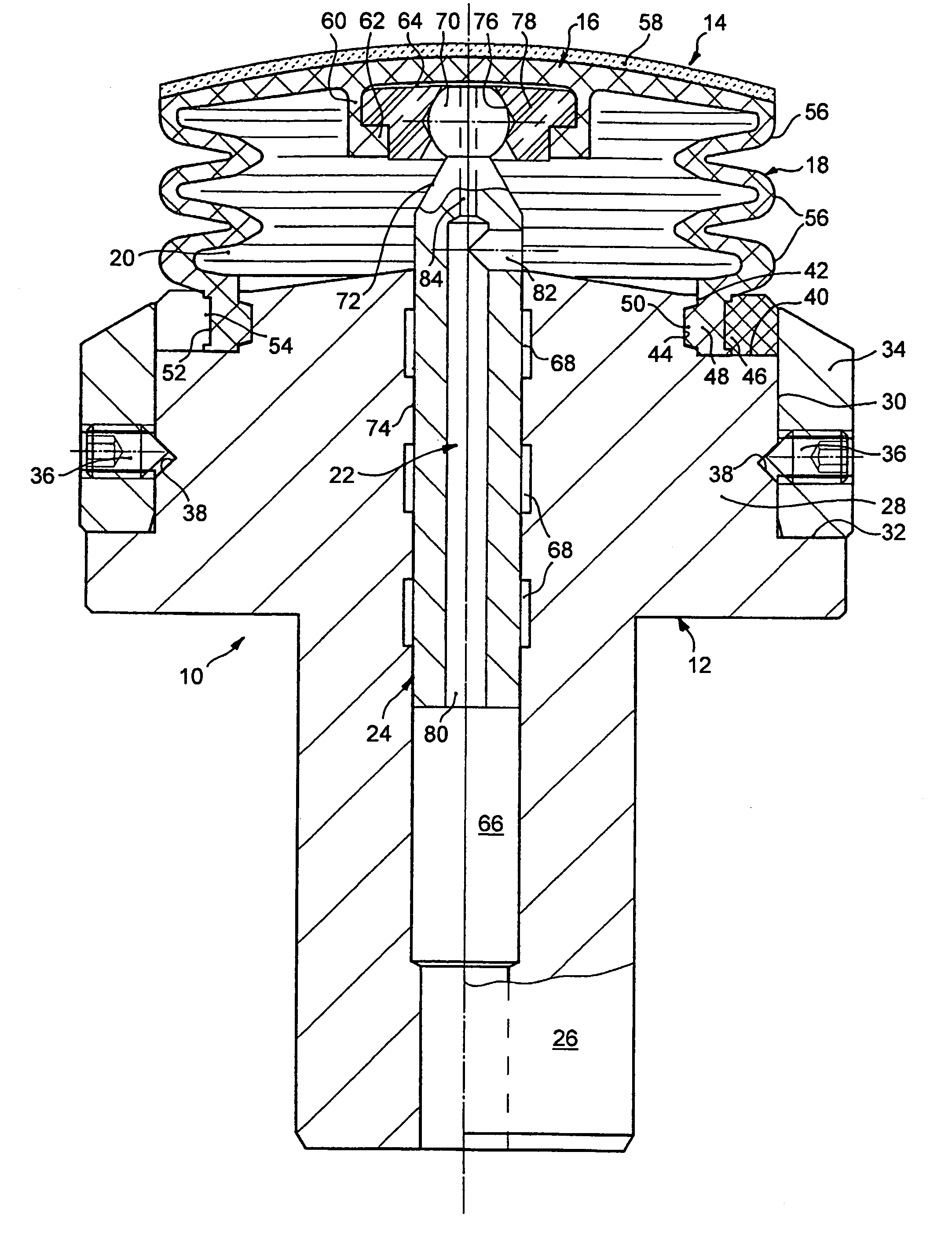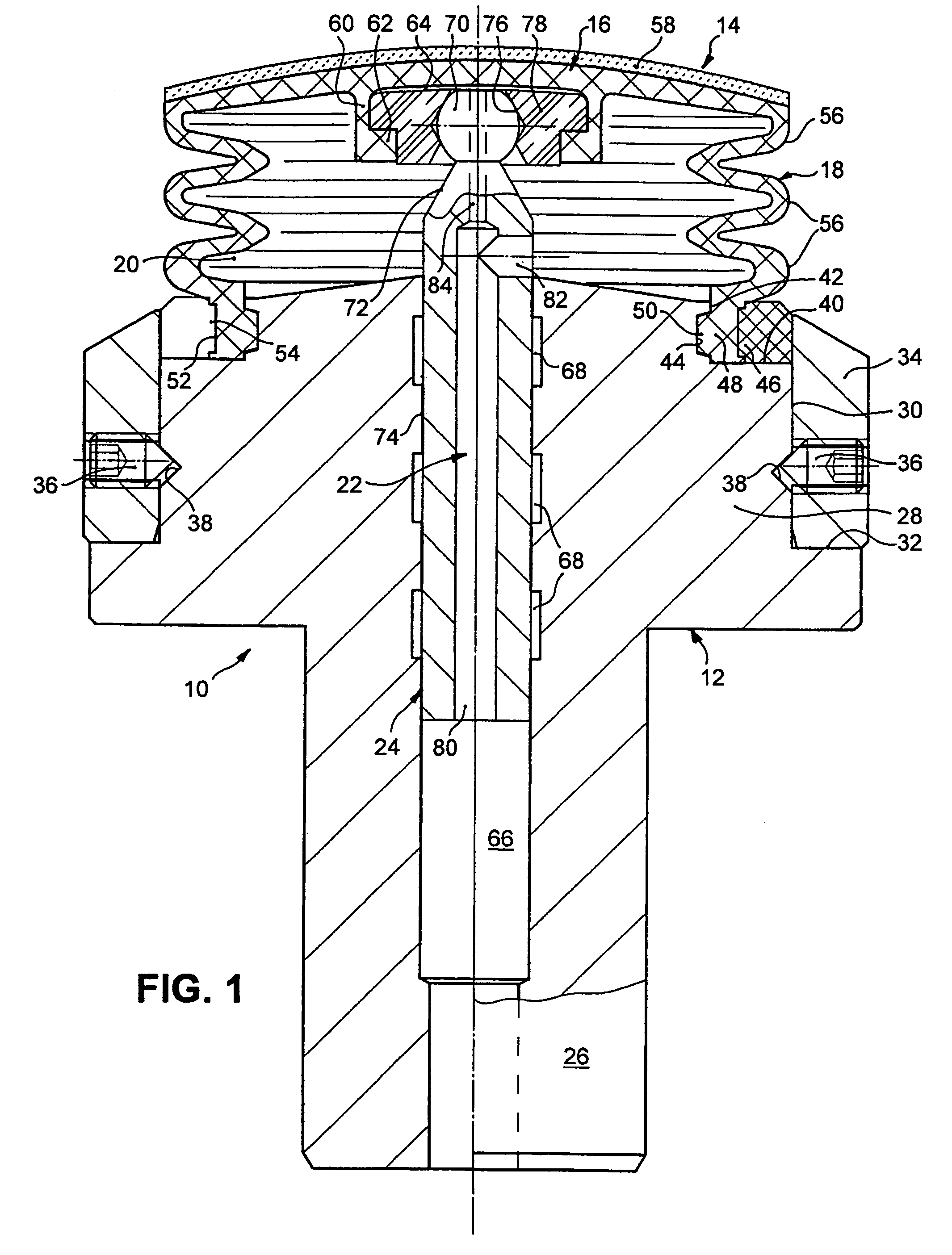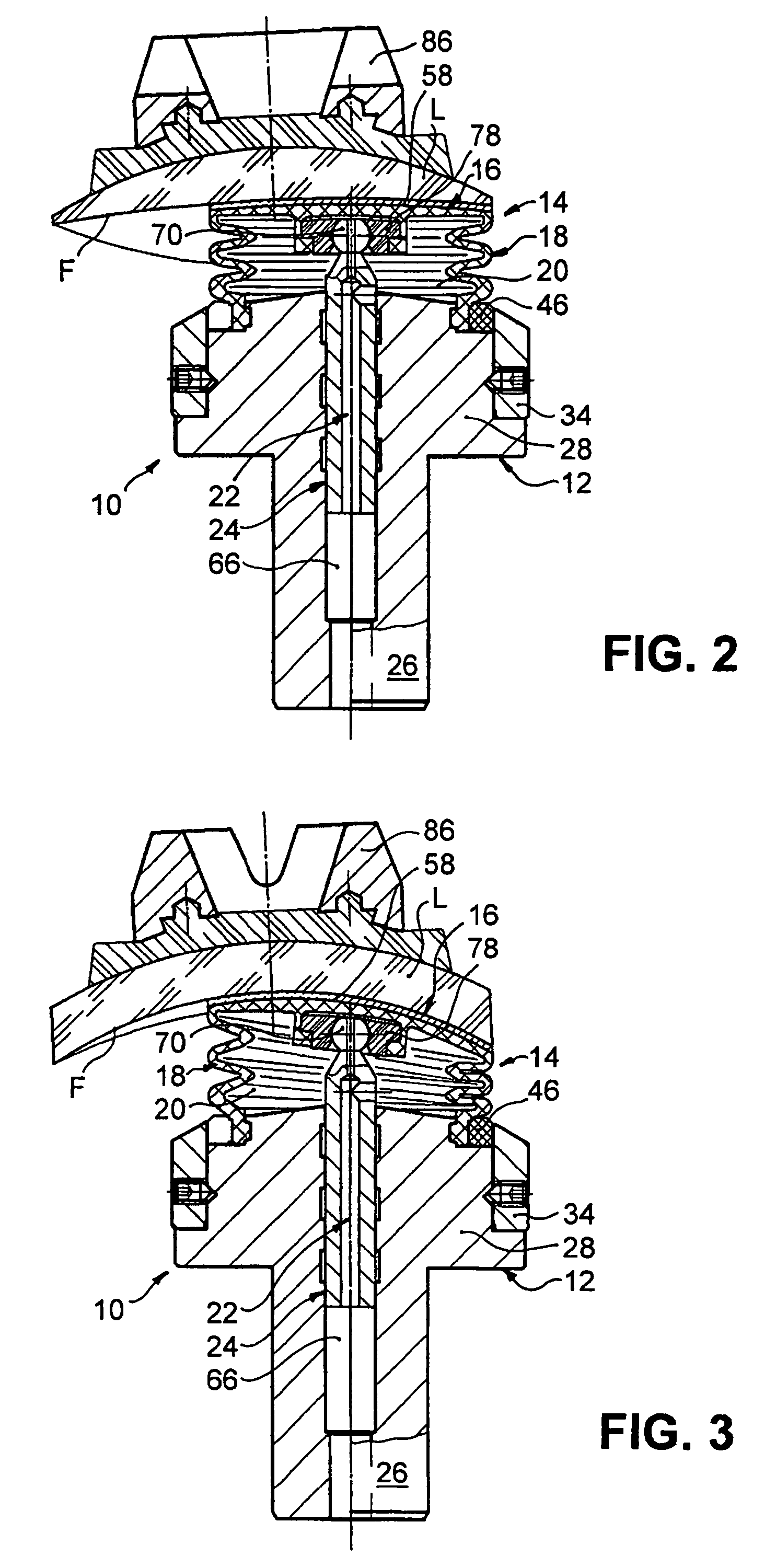Tool for fine machining of optically active surfaces
- Summary
- Abstract
- Description
- Claims
- Application Information
AI Technical Summary
Benefits of technology
Problems solved by technology
Method used
Image
Examples
Embodiment Construction
[0033]According to FIG. 1 a tool 10 for fine machining of optically active surfaces F, in particular for free form surfaces and toric surfaces on spectacle lenses L, has a base body 12, which can be attached to a tool spindle (not shown) of a machine tool known in itself (also not shown). Furthermore the tool 10 has an elastic membrane 14 that has a machining section 16 attached to which is a gaiter section 18, by means of which the membrane 14 is attached to the base body 12 so that it can rotate therewith. The base body 12 and the membrane 14 delimit a pressure medium chamber 20 of the tool 10 which via a channel 22 can be pressurized optionally with a suitable liquid or gaseous pressure medium (e.g. oil or compressed air with a pressure of around 0.2 to 0.6 bar), in order during machining of the optically active surface F to exert a machining pressure via the machining section 16. Guided longitudinally mobile on the base body 12 is a guide element 24, which as will be described i...
PUM
 Login to View More
Login to View More Abstract
Description
Claims
Application Information
 Login to View More
Login to View More - R&D
- Intellectual Property
- Life Sciences
- Materials
- Tech Scout
- Unparalleled Data Quality
- Higher Quality Content
- 60% Fewer Hallucinations
Browse by: Latest US Patents, China's latest patents, Technical Efficacy Thesaurus, Application Domain, Technology Topic, Popular Technical Reports.
© 2025 PatSnap. All rights reserved.Legal|Privacy policy|Modern Slavery Act Transparency Statement|Sitemap|About US| Contact US: help@patsnap.com



